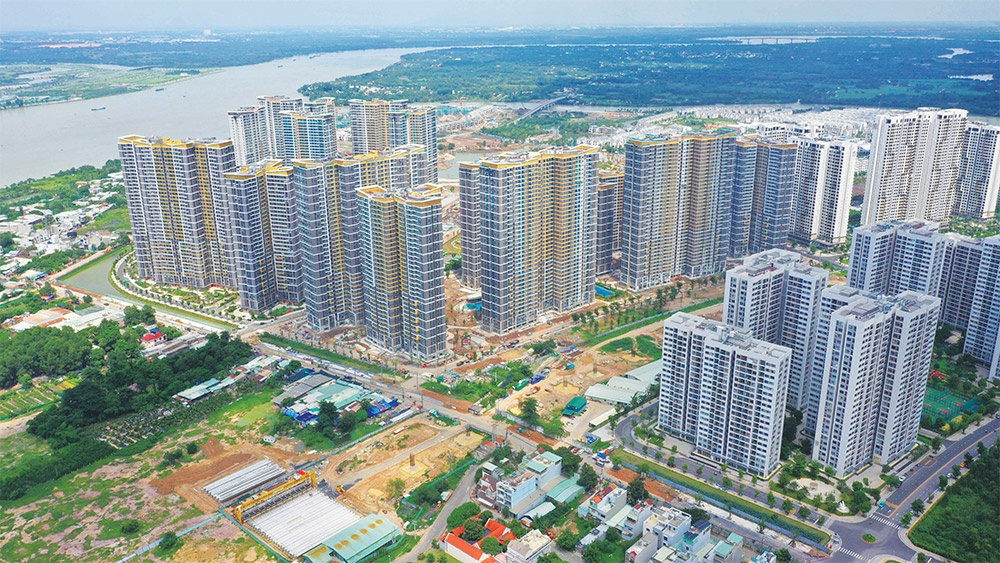According to the General Statistics Office, the industrial sector experienced many positive changes and achieved good growth, in the first six months of the year. Notably, in the second quarter, industrial production recovered positively, based on relatively low growth in the same period of 2023 (0.86%), with the added value reaching 8.55%, compared to the same period. Specifically, the manufacturing and processing industry surged with a growth rate of 10.04%, while the electricity production and distribution industry continued to grow strongly at 14.15%, ensuring electricity supply for production, business, and people’s needs. The water supply, waste management, and wastewater treatment sectors increased by 7.83%, and the mining industry recorded a negative growth of 9.06%, due to the policy of gradually reducing domestic mineral extraction.
Overall, in the first six months, the added value of the industrial sector reached 7.54%, and many secondary sectors had double-digit growth.
Enterprise’s recovery beyond expectations
Despite many pessimistic forecasts, at the beginning of the year, industrial enterprises have shown a good recovery in the first half of the year. Many businesses have made a spectacular comeback.
For multi-industry conglomerates like DNP Holding, systems operation under unstable economic conditions over the past six months, has been a significant challenge. However, by the end of May, the company’s revenue exceeded 50% of the plan, and profits increased by more than 50%.
Tran Huu Chuyen, Deputy General Director of the Group, noted that this result was beyond the initial forecast thanks to a remarkable orders recovery amid cheaper and more accessible credit. “Despite challenging economic conditions, we highly appreciate the timely support from the Government. We have taken advantage of boosts related to policy to restructure and recover effectively.”
A highlight in the economic picture of the past six months was the attraction of foreign direct investment (FDI). The capital flow continued to increase, estimated at 10.84 billion USD, up 8.2% from last year. This is the highest figure for the first six months in the past five years.
This has provided companies in the cleanroom and high-tech supply areas, such as Intech Group, with many advantages. According to Cao Dai Thang, CEO of the Group, the industrial production activities of FDI enterprises have been quite active, with a high demand for building production systems, allowing the company to recover better.
Phi Huong Nga, Director of the Industrial and Construction Statistics Department under the General Statistics Office, assessed that industrial growth was positive, with industrial production continuing the recovery momentum from the first quarter of 2024 and showing a clearer growth trend in the second quarter. The industrial production index increased month by month and quarter by quarter, with 5.9% in the first quarter, an estimated 9.5% in the second quarter, and an estimated 7.7% in the first six months of 2024, compared to the same period last year. Among these, three out of four primary industrial sectors (including manufacturing, electricity production and distribution, water supply, and waste treatment) increased compared to last year, with growth rates of 8.5%, 13.0%, and 6.3%, respectively.
Especially, the manufacturing and processing industry, which accounts for more than 74% of the added value of the entire industrial sector, continued its growth trajectory in a clearer trend, increasing by 8.5% in the first half of the year, compared to the same period last year while the same period saw a decrease of 1.8%.
In the manufacturing and processing industry, inventory levels decreased as reflected by an increase in production index, a higher consumption index than production, and an inventory index reduction. Specifically, the production index and consumption index increased by 8.5% and 10.8%, respectively (the consumption index increased by 2.3 percentage points higher than the production index) and the inventory index was expected to increase by 9.6% as of June 30, 2024, compared to the same time last year, significantly lower than the 19.9% increase in the same period in 2023. The average inventory ratio of the manufacturing and processing industry in the first six months of 2024 was 76.9%, much lower than the 83.1% increase in the same period in 2023.
Business confidence
Le Duy Binh, an economic expert, believes that this recovery is also clearly reflected in the relatively high increase in exports and imports, with 14.5% and 17%, respectively. These figures indicate that enterprises had good order volumes and showed positive imports of raw materials for production.
Binh said the number of enterprises returning to the market and the number of newly established enterprises increased strongly, showing that the health of the business sector has improved. This has reversed the trend of previous years when the number of enterprises withdrawing was higher than that of new establishments. “Particularly, the recovery of the manufacturing and processing industry has been stronger, showing a more reliable recovery of the economy,” said Binh.
Paulo Medas, Head of the International Monetary Fund (IMF)’s 2024 Article IV Mission to Vietnam, gave a positive evaluation of Vietnam’s flexible fiscal and monetary policy management. State’s support policies are targeted correctly to help the economy recover and grow more sustainably. “Especially, the recovery of the business sector shows that business confidence has returned. This is also quite clearly reflected in the FDI sector. When global capital flows are still very gloomy, Vietnam remains a reliable destination for many foreign investors”, Paulo assessed.
However, in the context of many global uncertainties, the Government and relevant ministries and agencies must continue to support business activities, Binh added. There are still more than 100,000 enterprises withdrawing from the market, and the survey results on business trends of manufacturing and processing enterprises showed that more than 60% still believe that the business situation will not improve. This indicates that there are still issues in need of being addressed to improve the business environment and boost the spirit and enthusiasm of enterprises in business activities.








